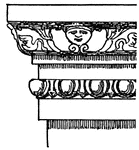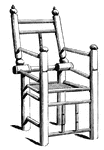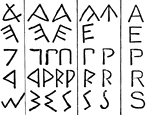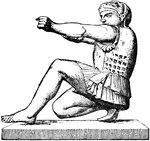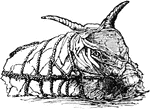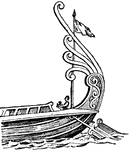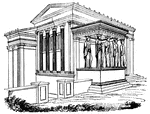
Caryatic Order
An order of architecture wherein the entablature is supported by female figures clothed in long garments,…
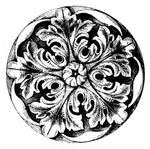
Cinquefoil
A five-leaved ornament, in circular and other divisions of the windows of ancient churches, and also…

Mortar Practice - Rear View
"Mortar practice- rear view of 13-inch mortar, with its usual complement of seven gunners. The mortar…
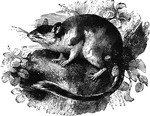
Glis
"Described as being five inches long, with a tail four inches, and found in Greece, Italy, Spain, France,…

spanish caravel
A Spanish caravel. The vessels furnished by Isabella were only caravels, light coasting ships,…
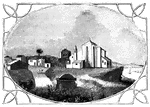
Palos
View of Palos. The pile of buildings in this view, standing upon the bluff, is the ancient Church of…

Lyre Bird
Also known as the Superb Menura, the lyre bird is noted for its distinctive tail feathers. The male…
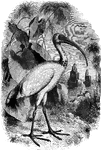
Sacred Ibis
Found throughout Africa, the sacred (or white) ibis was revered by the ancient Egyptians.
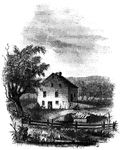
Wintermoot's Fort
Site of Wintermoot's Fort. This view is from the ancient bed of the Susquehanna, looking west. The building,…
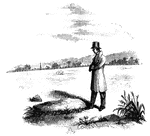
Queen Esther's Rock
Queen Esther's Rock. This view is near the ancient river bank, looking westward. The rock is a sort…
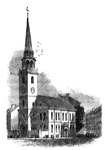
Old South
"The Old South. This venerable and venerated edifice, that stood through all the storms of the Revolution,…
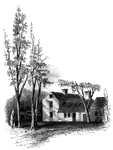
Clark's House
"Clark's House, Lexington. This building was standing when I visited Lexington in 1848. It was built…
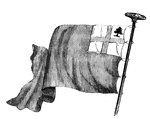
New England Flag
"The New England flag. This is copied from an old Dutch work, preserved in the library of the New York…
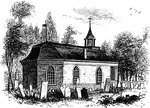
Sleepy Hollow Church
"Ancient Dutch Church in Sleepy Hollow. This view is from the church-yard, looking southwest. The porch…

Monmouth Battle-Ground
"Battle-ground at Monmouth. This view is from the orchard, upon the site of Wayne's position when Monckton…
!["The Pen-Fish or Common Calamary, <em>L. vulgaris</em>, is the best-known species of the genus; the body is somewhat pellucid, of a greenish hue, changeable to dirty brown; the eyes are large and lustrous, of an emerald green, phosphoric, and fiery in a high degree. It is common in the european seas, and was known to the ancient Greeks and Romans. [Shown with a quill pen]" — Goodrich, 1859](https://etc.usf.edu/clipart/14000/14004/cmncalamari_14004_mth.gif)
Common calamari
"The Pen-Fish or Common Calamary, L. vulgaris, is the best-known species of the genus; the…

Bastile Key
"Key of the Bastile. This key of the old Paris prison known as the Bastile, was sent by La Fayette to…

Jamestown Island
"Distant view of Jamestown Island. This view is from the north side of what was once a marsh, but now…

Abacus
"A tray strewn with dust or sand, used in ancient times for calculating. A contrivance for calculating,…
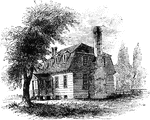
Moore's House
"This is a view from the lawn, looking south. It is a frame building with a brick foundation. At the…
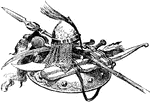
Saracen Arms
"Saracen Arms. Charlemagne now had to deal with certain non-Germanic peoples who were threatening his…

Acanthoclinus
"(A fish that) had a compressed claviform body, posterior dorsal fins nearly opposite to the anus, prolonged…

Accubation
"The act of lying or reclining; specifically, the ancient practice, derived from the Orient, of eating…
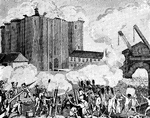
Bastile
"The taking of the Bastile, July 14, 1789. The Parisian mob, not satisfied with the formation of the…

Agrenon
"A net-like woolen garment worn by bachanals and soothsayers in ancient Greece. Image: Toso of Apollo…
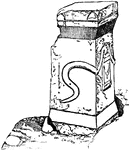
Greek Altar
"Round, triangular, or square in plan, often elaborately adorned with sculpture, and bearing inscriptions."-Whitney,…
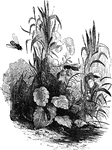
Honey Bee
"They are said to have originated in Greece, but have since spread all over the world; they live in…

Amphora
Amphoræ are jars with narrow necks and two handles, used by ancient Greeks for transporting oil…

Amphora
Amphoræ are jars with narrow necks and two handles, used by ancient Greeks for transporting oil…

Amphora
Amphoræ are jars with narrow necks and two handles, used by ancient Greeks for transporting oil…
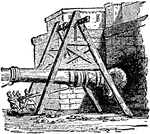
Battering Ram
"The Battering Ram is an ancient military contrivance used for battering down walls. It consisted of…
Filipino Bolo
"A Bolo is a short, broad, lance-shaped weapon; used by the Filiinos in their operations against the…

Filipino Bolo Sheath
"A Bolo is a short, broad, lance-shaped weapon; used by the Filiinos in their operations against the…

Spiny lobster
"The Spiny Lobster, Palinurus vulgaris, which may be taken as the type of the family, often…
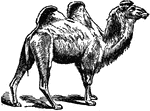
Camel
"Camel is a genus of ruminant quadrupeds, characterized by the absence of horns; a fissure in the upper…
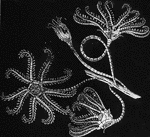
Encrindae
"Theses animals were all supported upon a long stalk, at the extremity of which they floated in the…

Torque
"A Torque, in archæology, is a twisted collar of gold, or other metal, worn around the neck, in…
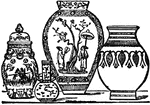
Chinese, Japanese and Indian Vases
"A Vase is a vessel of various forms and materials, applied to the purposes of domestic life, sacrificial…

Grecian Vases
"A Vase is a vessel of various forms and materials, applied to the purposes of domestic life, sacrificial…

Temple of Karnak
"Karnak is a village in Egypt built on the site of Thebes, on the bank of the Nile, and renowned for…
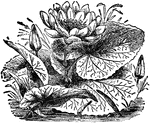
Egyptian Water Lily
"Lotus is a name given to various flowers, including several beautiful species of water lily, especially…



